If you’ve always described yourself as a “natural light photographer” plunging into the world of artificial lighting can be very confusing. What gear should you buy?
This guide will attempt to answer that question. I’d like to think it’s reasonably objective about what’s good and affordable but of course it’s influenced by my biases. As someone who has been photographing people for the last 15 years, I can say that this is the gear I would buy if I was starting out today. It’s gear I own and actively use.
Continuous light or flash?
The first lighting choice is between continuous light and some kind of flash. If you’re on a budget that probably means a choice between compact fluorescent (CFL) or “speedlight” flash. For me the humble speedlight wins every time:
- it’s relatively small and compact
- it’s reasonably bright and powerful
- it’s battery powered (no cables!)
- there are plenty of lighting modifiers available to suit it
- it can be used both on and off-camera
- understanding flash concepts allows you to create interesting effects (eg. freezing motion with slow-shutter) not possible with continuous light
One of the first lights I ever bought was a studio continuous light and while I still have it, now I only drag it out of the garage when I’m shooting some video. Most of my portrait photography work involves using speedlights.
Flash
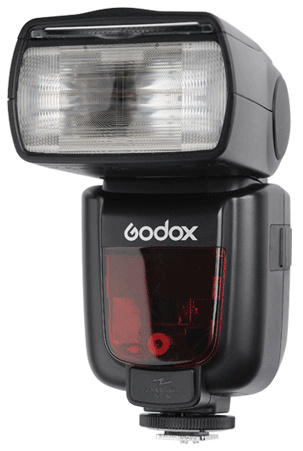
So which speedlight flash?
I would recommend the Godox TT685 (approx $AU190) appropriate to your camera brand. For example, a Canon photographer would buy the TT685-C model.
This flash takes 4 AA batteries and has an inbuilt radio transmitter/receiver. It has TTL (automatic power) capabilities which may be useful if you decide you also want to use it on-camera.
You could consider the more expensive Godox V860II or V1 models but they’re no more powerful. They do offer a nifty rechargeable battery and can recycle slightly faster between each shot. You could also consider the cheaper/smaller TT350/V350 speedlights but I don’t think they’re powerful enough, especially when you start adding larger modifiers.
Flash trigger
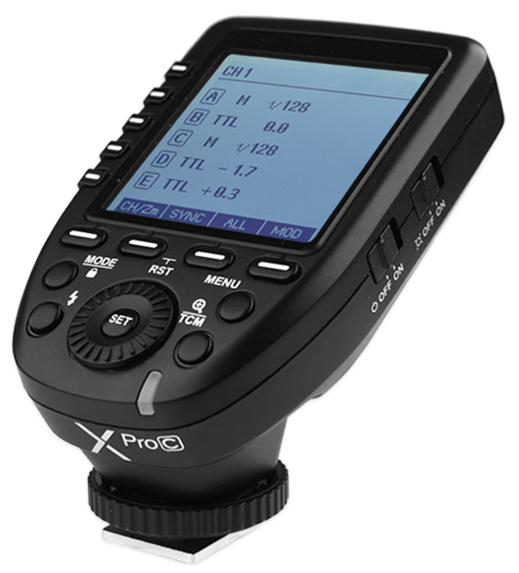
You can trigger an off-camera speedlight in a number of ways. The most reliable is a radio-triggering solution and Godox offer 3 radio triggers for their flashes. Other brand radio triggers won’t be compatible with the Godox X radio system.
I recommend the Godox XPro trigger (AU$110) appropriate for your camera brand (eg. XPro-C for Canon users). Powered by 2 AA batteries, it’s designed to be easy to use with lots of buttons and a large LED screen. The trigger will allow you to change most of the settings on your speedlight without needing to walk over and press buttons on the speedlight itself.
An alternative Godox option is the X2T ($AU100) which looks similar to Godox’s original but awkward X1T trigger. The XPro trigger addressed the issues with the X1T design but some photographers still preferred the lower profile of the X1T design so Godox created the X2T.
You may need to consider appropriate AA batteries for both the flash and trigger. For rechargeables I recommend either Eneloop or IKEA LADDA batteries (4 AAs for $AU15).
Lighting stand
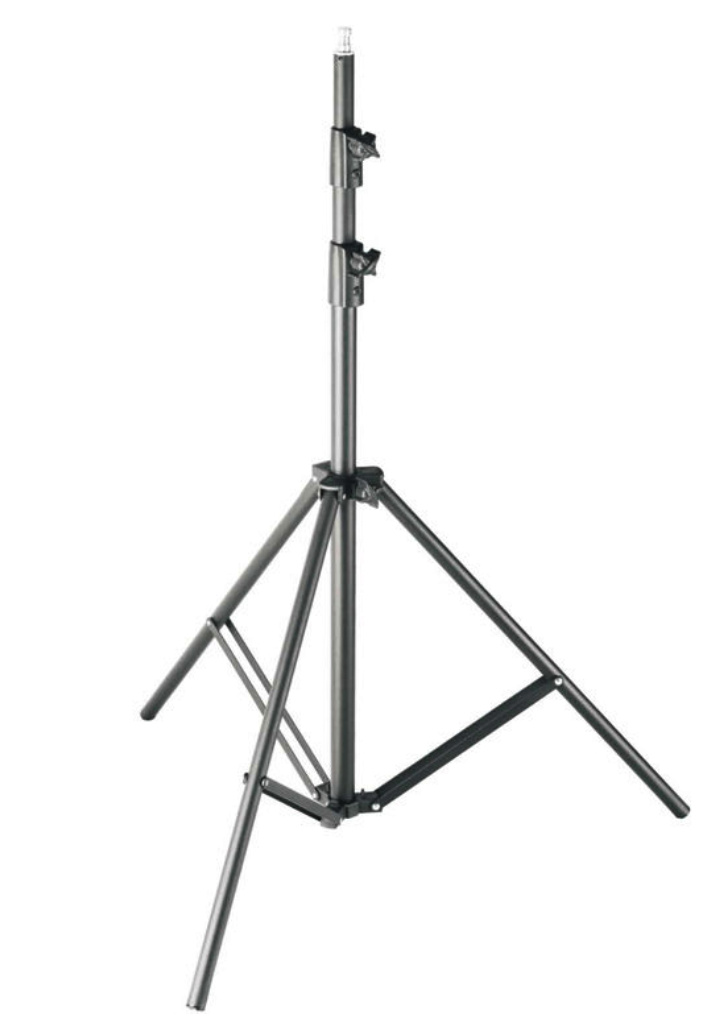
A light stand isn’t expected to do much so it’s hard to say which one you should get. A cheap one will do the job just fine but you may later decide you’d prefer something more stable or robust and wish you’d bought something more expensive.
Ideally, a light stand should reach to at least 2m high as you usually want the light positioned above eye-height. You can’t really use a camera tripod for mounting a light because they’re not tall enough.
If you just want to save money, look for a stand in the $AU50-100 price range. If you can, try something in the $AU100-200 range, perhaps something that has air-cushioning in the centre column to avoid a violent “bang!” when it slides down. You’ll get more stability from a stand with wider feet. It’s probably best to avoid bargain basement stands (eg. under $AU50) as they’re the stands most likely to break and you’ll just end up replacing them anyway.
If you want a small and portable stand (sacrificing stability) I recommend the Manfrotto 5001B (approx $AU120). If you want something sturdier, I recommend the Manfrotto 1052BAC (approx $AU170). A budget option might be the Godox 260T (which I haven’t used).
If you are considering shooting outdoors, I strongly recommend using some kind of weights or sandbag on the stand. You don’t want the stand blowing over and killing your flash. You can buy sandbags empty and then fill them with kid’s playground sand from Bunnings (20kg for $7).
Flash mount
It is possible to mount your speedlight directly on some lighting stands but that ends up pretty restrictive as you can’t easily angle the light where you want. You really want some kind of swivel for pointing the flash up/down and you want some way of easily adding lighting modifiers to it.
I recommend a Godox S1 (or the updated S2) S-type bracket. These brackets hold a speedlight by clamping the head. They also have a swivel, an umbrella mount and they feature an industry-standard Bowens mount which you can use to add all kind of modifiers for different effects.

I have used various other foot-mounted flash mounts in the past but I’ve never been completely happy with them. When I first encountered the S1 bracket I was delighted at how it solved so many problems in a thoughtful and robust design. I prefer to use the original S1 version because it has a better umbrella mount and I don’t have to worry about losing the padding inserts of the S2. Note that if you use a Godox V1 speedlight you’ll definitely need the S2 bracket because the flash head is too large for the S1 bracket.
Flash modifier
While a speedlight provides plenty of light, it tends to be pretty harsh light if you don’t add some kind of modifier to make it larger and softer.
I recommend a 60x60cm Godox softbox kit (model SFUV6060 with S1, model SGUV6060 with S2). These kits are relatively cheap and include a collapsible dual-diffuser softbox and the S-type bracket mentioned above. The softbox itself isn’t a true Bowens mount but simply clips over the front of the bracket quickly and easily.
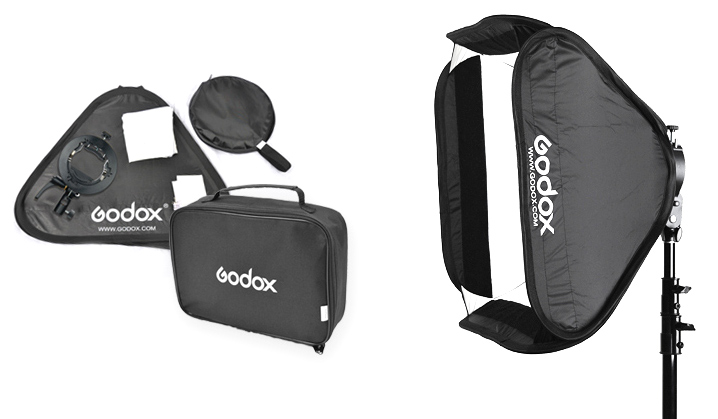
Godox sell other kits with smaller and larger versions of the softbox but I think the 60cm version strikes the right balance of creating soft light without requiring a lot of power (a bigger softbox produces softer light but requires a more powerful flash). If you can find a kit that includes a grid attachment (approx $AU10 extra) you will find that handy later when you want even more control over the light.
(I previously discussed these softbox kits when I first encountered them a few years ago)
A cheaper option for softening the light is a simple white shoot-through umbrella (approx $AU20) but you’ll still need a mounting bracket for that. It can’t attach directly to the speedlight. Umbrellas work fine but they’re easily damaged/destroyed and will give you less control over the light than a softbox.
Summary
Your final shopping trolley would include:
- Godox TT685 speedlight – approx $AU190
- Godox XPro radio trigger – approx $AU110
- Godox 260T lighting stand – $AU80+
- Godox 60cmx60cm softbox with S-type bracket (with grid) – $AU70
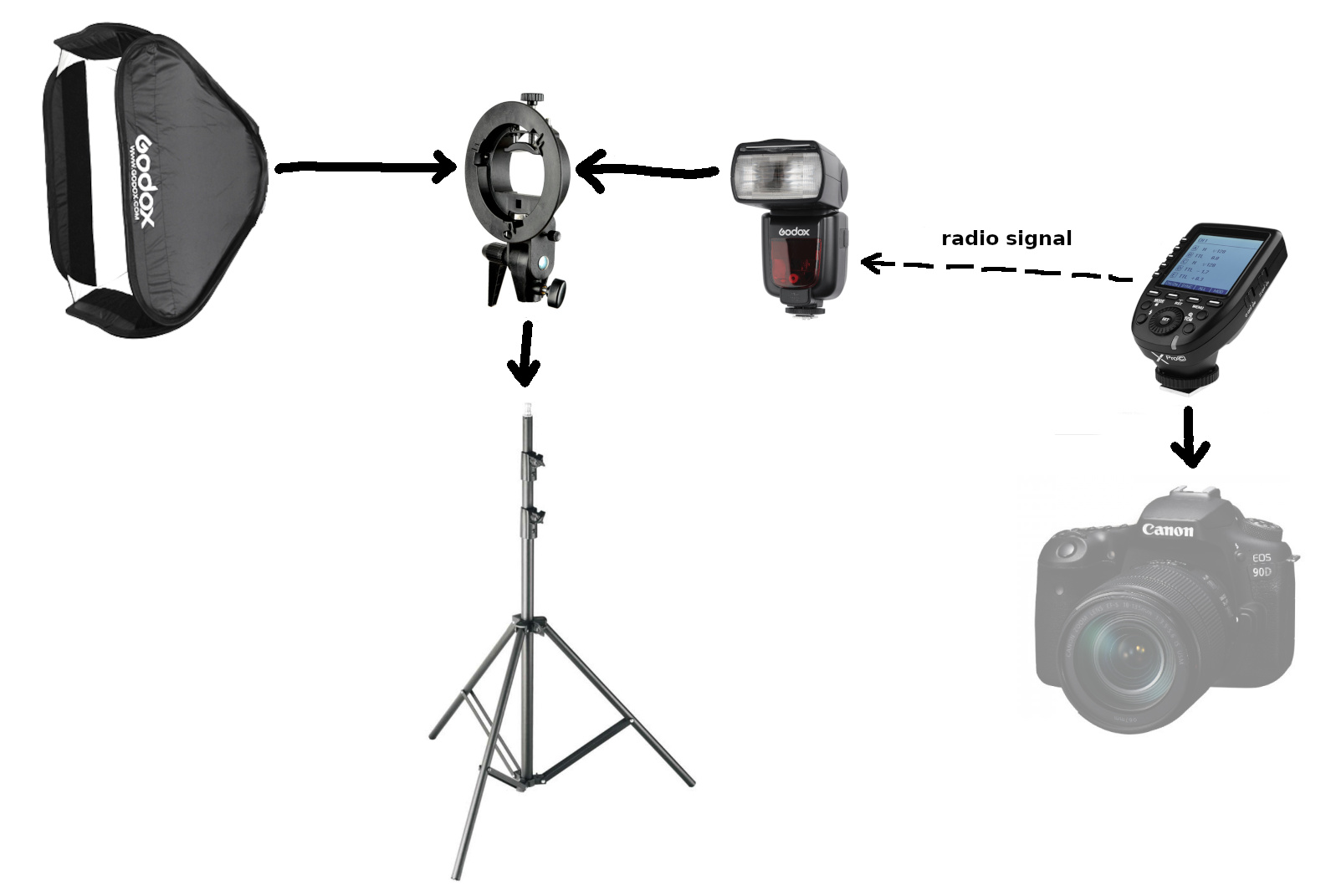
That comes to about $450. You may be able to find cheaper prices by shopping around, buying on ebay or buying secondhand.
If you already own a speedlight, you can just buy a suitable trigger for it but that could be expensive. For instance, the Canon radio trigger for Canon speedlights is around $AU300. It’s actually cheaper to buy a Godox X1R-C receiver (approx $AU80) for the speedlight and trigger it with the Godox XPro-C as if it were a Godox speedlight like this:

Yes, there is a very obvious Godox bias in my final list. I’ve used various other options over the years and while some worked fine, this gear just works better and I wish it had been available when I started out. In particular, the Godox S-type brackets (S1/S2) have been a revelation, simplifying the flash-mounting process while expanding the modifier possibilities because of the Bowens s-mount.
Buying a Godox speedlight and trigger means you’re buying into the Godox lighting system. Want something smaller? You can try the Godox TT350/V350 speedlights. Want something more powerful? Look at their AD200, AD300, AD400, AD600 and AD1200 options or maybe try their mains-powered studio lights. Most of their lights are compatible with their XPro trigger so you can easily use them all together.
The only other manufacturer I know of that offers this kind of comprehensive lighting system is Profoto who make high quality but expensive gear. A single Profoto A1 speedlight will cost you at least $800 and that’s without the Profoto radio trigger.

Taking charge of the lighting in your photos opens up a wide range of creative possibilities. There’s a lot you can do with just one light. Over time you might consider adding extra lights to this kit but there’s always something powerful in the simplicity of a single light. This is a great kit to get started on your lighting journey.
Next: setting up your first flash
